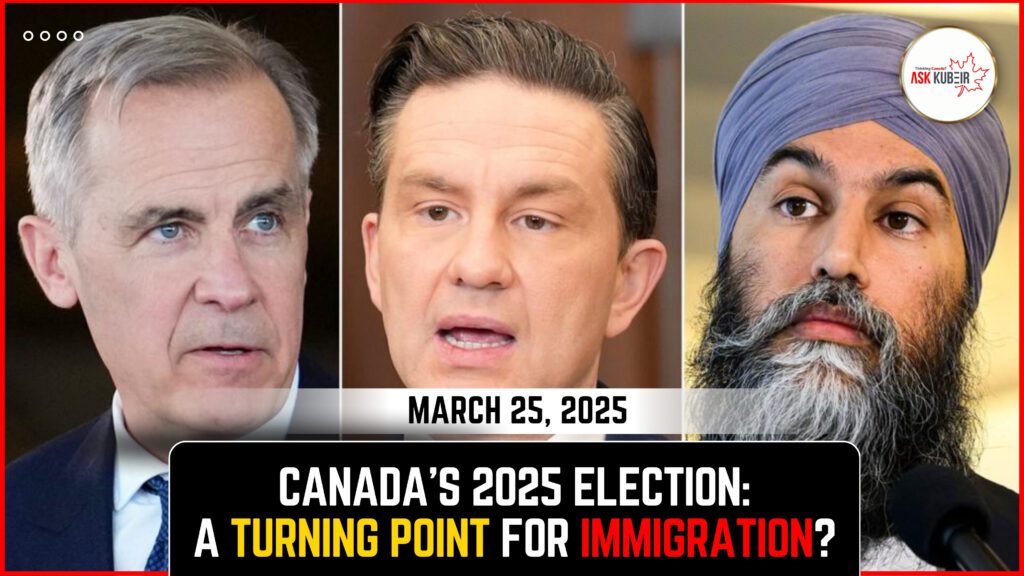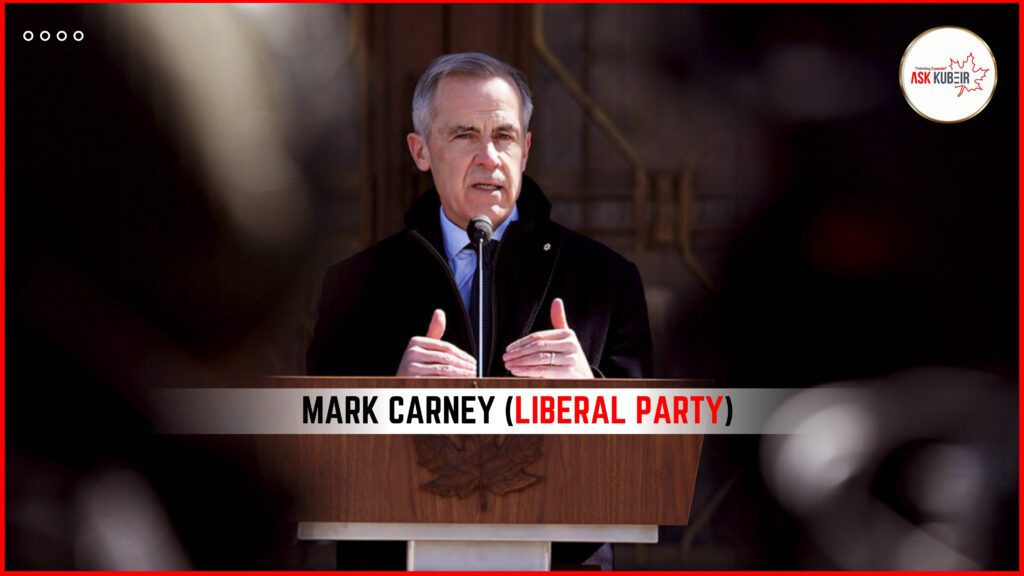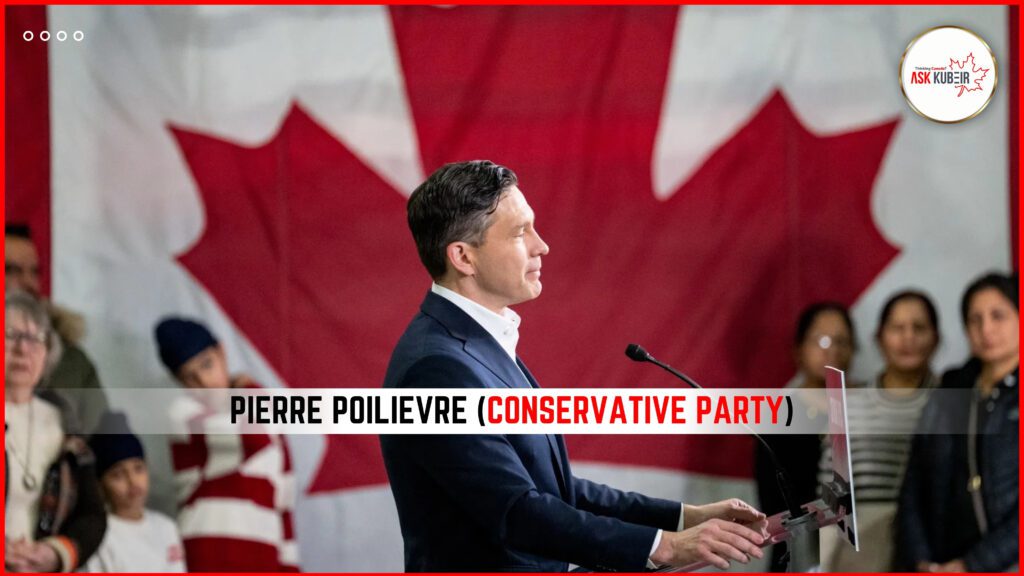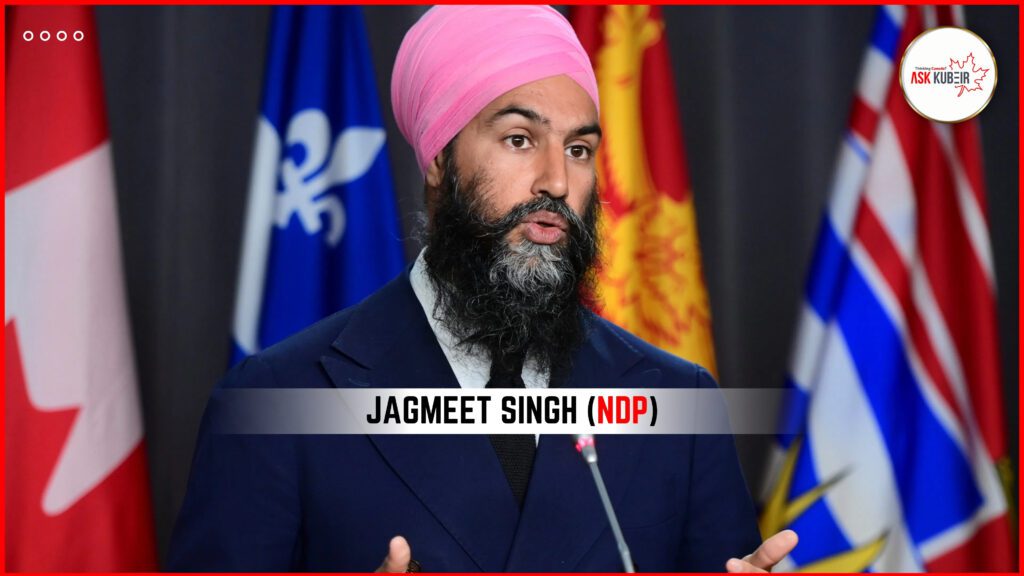
On April 28, 2025, Canadians will head to the polls to elect their next federal government. This election will have significant implications for immigration policy, as the two leading candidates, Mark Carney of the Liberal Party and Pierre Poilievre of the Conservative Party, present contrasting visions for the future of immigration in Canada.
Election Landscape: A Tight Race
After Liberal Leader Mark Carney called the election on March 24, early polling suggests a highly competitive race. The Signal, an election predictor, has Carney’s Liberals at 39.2% support with 174 projected seats, while Poilievre’s Conservatives sit at 39.1% support and 143 projected seats. Despite being nearly tied in overall support, the Liberals have a more efficient vote distribution, giving them a potential advantage in seat count. Meanwhile, Jagmeet Singh’s NDP is polling at 8.9% (8 seats), Yves-François Blanchet’s Bloc Québécois at 5.7% (17 seats), and the Green Party at 2.6% (1 seat).
This is a remarkable shift from earlier in the year when polls showed the Conservatives with a commanding lead before Carney’s leadership revitalized the Liberals. Analysts suggest that in regions where the Conservatives dominate, such as Alberta and Saskatchewan, their votes are concentrated, while the Liberals are gaining traction across key battleground areas, leading to a more favorable seat distribution.
Mark Carney (Liberal Party): A More Controlled Approach

Mark Carney, who took over leadership of the Liberal Party following Justin Trudeau, has proposed a shift in Canada’s immigration strategy. Carney has suggested capping immigration levels at 400,000 to 425,000 newcomers per year, a reduction from recent targets exceeding 500,000. This measure is intended to address concerns about the housing crisis and social infrastructure. His stance reflects a departure from the high immigration numbers Canada has seen in recent years, signaling a move toward a more sustainable and pre-pandemic immigration trend.
Carney acknowledges the importance of immigration for economic growth but argues that recent influxes have outpaced Canada’s ability to accommodate newcomers. His approach is expected to focus on ensuring sufficient housing, healthcare, and job opportunities before committing to larger immigration targets.
Carney has also promised tax cuts, particularly a reduction of the first income tax bracket from 15% to 14%, which could benefit middle-class workers but would cost the government around $6 billion in lost revenue. He plans to fund this through economic growth and efficiency improvements in government spending. However, critics question whether these measures will be sufficient to balance Canada’s budget while maintaining current government programs such as child care, dental care, and healthcare funding.
Pierre Poilievre (Conservative Party): Economic Self-Reliance and Immigration

Pierre Poilievre, the leader of the Conservative Party, has largely focused his campaign on economic policies, including tax cuts, housing affordability, and boosting Canada’s energy sector. While he has not detailed a comprehensive immigration plan, his stance is expected to align with prioritizing skilled workers who contribute to Canada’s economy.
Poilievre has positioned himself as an advocate for self-reliance and economic independence, which suggests he may favor an immigration policy that emphasizes skilled labor, workforce integration, and economic-driven migration. His approach could mean stricter criteria for permanent residency and potential revisions to the current Express Entry system, such as favoring in-demand sectors like healthcare, technology, and trades.
His tax policy includes a bigger tax cut, reducing the first tax bracket from 15% to 12.75% over three years, which could save Canadians up to $900 annually but would result in approximately $14 billion in lost revenue. Poilievre claims this would be offset by cutting spending on bureaucracy, consultants, and foreign aid, but critics argue that deeper spending cuts may be required, possibly impacting social programs and public services.
Jagmeet Singh (NDP): A Focus on Workers and Social Programs

Jagmeet Singh, leader of the New Democratic Party, has positioned himself as an advocate for working-class Canadians, focusing on social programs and affordability. His stance on immigration is centered around ensuring fair wages, better working conditions, and support for immigrants integrating into the workforce.
Singh has emphasized that immigration is crucial for Canada’s economy but argues that newcomers should not be exploited with low wages or precarious employment. He supports policies that protect immigrant workers and ensure fair labor standards while maintaining strong public healthcare and housing initiatives.
The NDP’s economic plan includes tax increases on the wealthiest individuals and corporations to fund expanded social programs, including affordable housing and universal pharmacare. This could lead to increased government support for immigrants but may also face resistance from business sectors wary of higher taxes.
How the Election Could Reshape Immigration Policy
The outcome of this election will shape the future of Canada’s immigration system in multiple ways:
- If Carney wins, immigration levels may be adjusted downward to align with housing and social capacity, ensuring a balanced intake. His fiscal policy suggests a more moderate approach to tax cuts while maintaining government programs.
- If Poilievre wins, the focus may shift toward economic immigration, with potential reforms to Express Entry and provincial nominee programs that emphasize skilled trades and tech professionals. His larger tax cuts may require government spending reductions, which could impact immigration services and social programs.
- If Singh’s NDP gains influence in a minority government scenario, policies supporting workers’ rights and public services may shape the future of immigration, potentially leading to stronger protections for immigrant workers and expanded social services for newcomers.
Additionally, all candidates will have to address public concerns over affordability, job competition, and social services, which are closely tied to immigration policy.
What This Means for Immigrants
For prospective immigrants, the election outcome could impact application processing times, available pathways, and support programs:
- Economic-class immigrants (Express Entry, PNP) may see changes in selection criteria, favoring specific industries or skill sets.
- Family reunification applicants might face longer wait times if immigration caps are imposed.
- International students and temporary workers could be affected by policies adjusting work permits, residency pathways, and post-graduate opportunities.
Conclusion
With Canada’s strong reputation as an immigrant-friendly country, this election could determine how open the nation remains in the coming years. Whether voters choose a controlled approach under Mark Carney, an economy-first immigration strategy under Pierre Poilievre, or a worker-focused policy under Jagmeet Singh, the policies enacted after April 28 will have lasting effects on future immigrants and Canada’s workforce.
As the election date approaches, staying informed about party platforms and their implications on immigration is crucial for aspiring immigrants and Canadian residents alike.

Would you like a consultation to explore your Canadian work options? Contact Ask Kubeir today!
📌 If you believe your VISA application should be showcased in the most favorable light when submitting to immigration, feel free to book our services.
📌 To book an appointment with Kubeir – Licensed Canadian Immigration Consultant, click the “Book Appointment”
📲 You may also reach us at this number for all immigration-related services:
- (+𝟭) 𝟰𝟯𝟳-𝟳𝟳𝟳-𝟯𝟳𝟳𝟳 (Canada)
- +971 45 26 4646 (Dubai)
Disclaimer: This is for informational purposes only and not legal advice. Always consult experts like us or the official IRCC website for up-to-date details.
